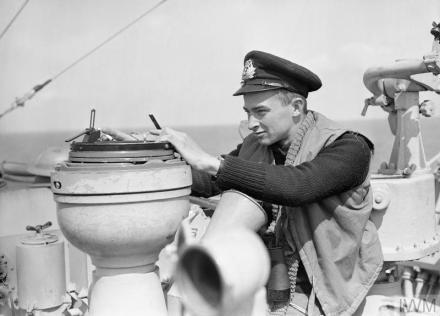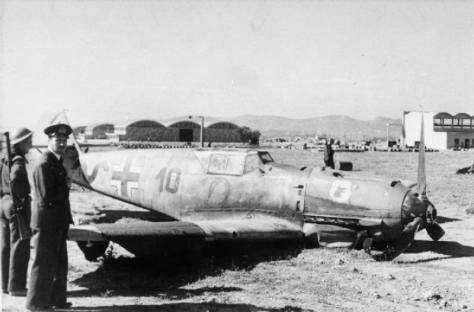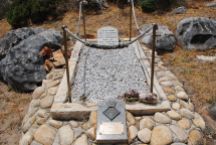6th June 1944. D Day, a very significant day in the history of mankind, and albeit on a smaller scale quite a number of South Africans did actually participate in it. The South African Naval Force (assisting the Royal Navy) is one such entity that did and this is one of these South African heroes to come from the D-day landings.

Here Sub Lieutenant Anthony Large BEM, South African Naval Force (Volunteers), of Durban, South Africa, is seen taking a bearing on the ship’s compass on board HMS HOLMES whilst she was helping to guard the Allied supply lines to and from the Normandy beachhead. He won his British Empire Medal BEM whilst he was a rating.
The HMS Holmes (K581) was a Captain Class frigate, originally intended for the United States Navy she was transferred to the Royal Navy before she was finished. The HMS Holmes found itself in the thick of battle during D-Day on the 6th June 1944 as an escort. She was alongside escorting large battleships like the HMS Rodney as they fired at shore targets in Normandy. Operating off the Caen beachhead and Le Havre, this Royal Navy flotilla known as Bombarding Force D, including the HMS Holmes, opened the channel for invading forces.
In this dramatic photograph the crew on the bridge of the frigate HMS Homes keep watch as gliders carrying 6th Airborne Division reinforcements to Normandy pass overhead on the evening of 6 June 1944.

Naval operations for the invasion were described by historian Correlli Barnett as a “never surpassed masterpiece of planning”. In overall command was British Admiral Sir Bertram Ramsay who had served as the Flag Officer at Dover during the Dunkirk evacuation four years earlier.
Operation Neptune, as the ‘D-Day’ operation was codenamed was quite something. Consider these staggering statistics. The invasion fleet was drawn from eight different navies, comprising 6,939 vessels: 1,213 warships, 4,126 landing craft of various types, 736 ancillary craft, and 864 merchant vessels. The majority of the fleet was supplied by the UK, which provided 892 warships and 3,261 landing craft. There were 195,700 naval personnel involved.

HMS Holmes (K581) during Operation Overlord
Available to the British and Canadian sectors were five battleships, 20 cruisers, 65 destroyers, and two monitors. German ships in the area on D-Day included three torpedo boats, 29 fast attack craft, 36 ‘R’ Boats and 36 minesweepers and patrol boats. The Germans also had several U-Boats available, and all the approaches had been heavily mined.
At 05:10, four German torpedo boats reached the Bombarding Force D Task Force and launched fifteen torpedoes, sinking the Norwegian destroyer HNoMS Svenner off Sword beach but missing the battleships HMS Warspite and HMS Ramillies. Not far from this action was our South African hero and the HMS Holmes.
Here the battleship HMS Ramillies shelling German gun batteries in support of the landings on Sword area, 6 June 1944. The photo was taken from the frigate HMS Holmes.

HMS Ramillies Sword area, 6 June 1944.
The British Empire Medal (BEM) awarded to Anthony Large is a significant British decoration, the medal is issued both for gallantry or meticulous service medal, however during the war it was generally awarded for gallantry to uniformed personnel, usually non-commissioned ranks below Warrant Officer.

British Empire Medal (BEM)
Related Links and work on South Africans during D-Day
Albie Gotze “This bastard is going to kill me”; Albie Götze’s Legion d’Honneur
Tommy Thomas South African D Day Hero: Lt. D.C. “Tommy” Thomas MC
Lyle Mckay South African bravery on D Day, Capt. Lyle McKay.
Cecil Bircher South African D Day Hero: Lt. Cecil Bircher MC
Royston Turnball Supreme South African heroism on Omaha Beach, Lt. Royston Turnbull DSC
Written and Researched by Peter Dickens Photograph copyrights and caption references – Imperial War Museum




 Meet the all time highest scoring British and Commonwealth forces WW2 fighter ACE, a South African named – Marmaduke ‘Pat’ Pattle DFC & Bar.
Meet the all time highest scoring British and Commonwealth forces WW2 fighter ACE, a South African named – Marmaduke ‘Pat’ Pattle DFC & Bar.
























